|
|
|
Sort Order |
|
|
|
Items / Page
|
|
|
|
|
|
|
| Srl | Item |
| 1 |
ID:
088983
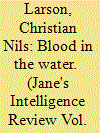

|
|
|
| 2 |
ID:
143664
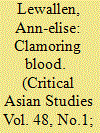

|
|
|
|
|
| Summary/Abstract |
The tension between silence and vocalization, embrace and rejection, of Ainu ancestry has been a key factor in negotiating Ainu subjectivity since Ainu territories were colonized in 1869. As early as 1799, expressions of Ainu ethnicity were alternately cloaked and exaggerated as Japan vacillated between assimilation and segregation policies in eastern Hokkaido Ainu communities. Officially recognized as Japan's indigenous peoples in 2008, Ainu subjectivity has become increasingly politicized as the state and other stakeholders seek to define Ainu ethnicity for future legislation. Today Ainu belonging is frequently gauged by bodily metaphors of a vocalized blood. Cultural sensibility and blood are often conflated in Ainu discourses of identity: Ainu revivalists report that a sensation of “clamoring blood” (J: chi ga sawagu) inspires them to revisit ancestral memories and begin fashioning Ainu identities. Historically, intra-Ainu relations were not bound to blood but instead embodied in material expressions, such as invisible cords for women and crest-like emblems for men, symbols that enabled flexibility where needed. Since the twentieth century, the hyper focus on blood raises the specter of colonially imposed rhetorics of eugenics, assimilation policies, and specifically, the problem of race. Relatedness in the Ainu community is not exclusively defined by “consanguineal relations”; rather, a long history of adopting ethnic Japanese children and non-Ainu into Ainu families renders complex the question of identity. This article assesses how immutable notions of racial difference intersect with self-determination and current articulations of Ainu identity.
|
|
|
|
|
|
|
|
|
|
|
|
|
|
|
|
| 3 |
ID:
165932
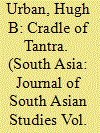

|
|
|
|
|
| Summary/Abstract |
This article examines the modern transformations of the temple of the goddess, Kāmākhyā, and her most important festival, Ambuvācī Melā, in Assam. Since at least the eighth century, Kāmākhyā has been revered as one of the most important ‘seats of power’ or centres of the goddess that dot the landscape of South Asia. However, during the last century, this temple and its festivals have undergone a series of profound transformations—first, in the context of Hindu nationalism and attempts to imagine a unified sacred landscape of ‘Mother India’, and second, in the context of spiritual tourism and efforts to develop the Northeast region as a new economic powerhouse for the twenty-first century.
|
|
|
|
|
|
|
|
|
|
|
|
|
|
|
|
| 4 |
ID:
182855
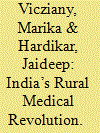

|
|
|
|
|
| Summary/Abstract |
This article explores the potential conflict between allopathic (‘Western’) medicine and rural beliefs in village goddesses, given that each demands blood for diagnostic purposes and sacrifices, respectively. Our objective is to understand the experiences and attitudes of rural residents to blood tests, blood donations and blood transfusions. We explore the specific question of the extent to which poor villagers in Wardha district, Maharashtra, might be supportive of or opposed to point-of-care blood testing at their doorsteps. We began by asking them about their religious practices, including the sacrifice of animals and offerings of blood to deities. Such values could affect their perspectives on human blood and allopathic medicine. After that, we asked whether they had any fears about modern medical treatments and technologies—such fears might be driven by anxieties about angering goddesses if human blood was used for non-sacred purposes. Our investigations took us into an inquiry about villagers’ experiences with hospitals. We came to realise that for villagers, despite the costs of hospital diagnosis and treatment, hospitalisation had become a source of new knowledge about blood. And, finally, we asked villagers what they thought about the value of point-of-care blood testing at their doorstep. We were told that the high cost of hospital treatment means that villagers support technologies that can be used at their doorstep and work towards improving their health and longevity.
|
|
|
|
|
|
|
|
|
|
|
|
|
|
|
|
| 5 |
ID:
124956
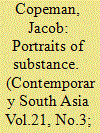

|
|
|
|
|
| Publication |
2013.
|
| Summary/Abstract |
This essay examines the way extractions of human blood - for medical donations, portrait paintings, and petitions - have come to form a significant means of political communication (particularly as a means of political protest) throughout India, focusing in particular on a case study from the south of a karate teacher and artist who, through painting multiple portraits of the Tamil Nadu Chief Minister with his blood, sought land for his karate school. The second half of the essay explores wider features of India's 'sanguinary politics', focusing in particular on ways in which publicly witnessed deployments of political activists' own blood once seemed to promise both intensification and purification of mass political idioms. It also considers how and why this promise has largely remained unfulfilled.
|
|
|
|
|
|
|
|
|
|
|
|
|
|
|
|
| 6 |
ID:
125913


|
|
|
|
|
| Publication |
2013.
|
| Summary/Abstract |
This article traces the 'otherisation' of US denizens of Haitian descent during the 1980s and 1990s, subsequent to their incorporation into the '4-H club' as 'Haitians', regardless of their citizenship. It argues that by collapsing the categories Haitian-Americans and Haitian immigrants into 'Haitians' and by accusing this collectivity of bringing HIV/AIDS to the United States, the US medical and political leadership and sectors of the media nullified the Haitian-Americans' US citizenship and maligned both groups' identity, promoting their alienation from the larger US population. It concludes with a plea to reframe the concept of citizenship and reassess the normative notion of belonging to the US nation-state.
|
|
|
|
|
|
|
|
|
|
|
|
|
|
|
|
| 7 |
ID:
093817
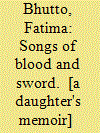

|
|
|
|
|
| Publication |
New Delhi, Penguin Group, 2010.
|
| Description |
470p.Hbk
|
| Standard Number |
9780670082803
|
|
|
|
|
|
|
|
|
|
|
|
Copies: C:1/I:0,R:0,Q:0
Circulation
| Accession# | Call# | Current Location | Status | Policy | Location |
| 054912 | 813.54/BHU 054912 | Main | On Shelf | General | |
|
|
|
|
| 8 |
ID:
188259
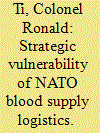

|
|
|
|
|
| Summary/Abstract |
If an event triggers Article V and NATO is drawn into defensive combat operations, there could well be more dead and wounded than the West has encountered before. Most casualties will result from combat trauma and require both surgery and blood transfusion to survive. Under NATO’s split “collective-individual” responsibility system, should national blood logistic systems be unable to deliver; and with NATO unable to exercise overall coordination, serious consequences for individual morale, the will to fight, and overall combat capability will occur, producing dire strategic outcomes. This article focusses on NATO blood supply logistics and highlights current deficiencies, using Estonian Defence Force blood supply logistics as its working example. The article’s principal argument is that blood supply logistics has “tactical-level” effects which have critical flow-on strategic effects on issues such as force preservation and morale. Blood supply logistics is a complex issue urgently requiring concerted NATO, multinational, and national attention.
|
|
|
|
|
|
|
|
|
|
|
|
|
|
|
|
|
|
|
|
|